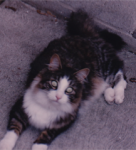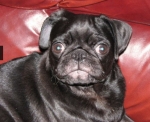Rubicon wrote: ↑Mon Apr 25, 2022 8:12 am
Do you have the actual 1st report?
SLEEP ARCHITECTURE:
The study started at 21:26:04 and ended at 05:06:10. Total sleep time (TST) was 183 minutes resulting in a sleep efficiency of 40.2% (total recording time (TRT) = 455 m). There were 33 awakenings with a total time awake after sleep onset of 216.5 minutes. The sleep latency was 55.5 minutes and the REM latency was 218 minutes. The patient spent 86.6% of sleep time in the supine position. The sleep stage percentages were 25.1% stage N1, 40.2% stage N2, 23.2% stage N3 and 11.5% REM sleep. There were 126 arousals, resulting in an arousal index of 41.3. There were 94 stage shifts.
BASELINE RESPIRATORY DATA:
Snoring was noted. There were 42 respiratory events consisting of 15 apneas [3 obstructive (20.0%), 1 mixed (6.7%), and 11 central (73.3%)] and 27 hypopneas. The patient spent 100.0% of baseline sleep time in the supine position. The apnea-hypopnea index (AHI) was 35.5 and the central-apnea index CAI) was 9.3. The supine AHI was 35.5. The off-supine AHI was 0.0. The REM AHI was 0.0. The non-REM AHI was 35.5 and the arousal index was 34.6. The mean oxygen saturation was 92.0%, with a minimum oxygen saturation of 80.0%. The patient spent 9.5% (6.8 min) of sleep time with an oxygen saturation below 90% and 3.3% (2.3 min) of sleep time with an oxygen saturation at or below 88%. The wake supine end-tidal CO2 (ETCO2) value was 37 mmHg. The patient spent 0.0% of sleep time with an ETCO2 above 50 mmHg and 0.0% above 55 mmHg. Cheyne-Stokes/Periodic Breathing was not present. Supplemental oxygen was not administered.
From Pugsy...this is where I get in trouble removing the indent tab stuff and had to stop since things won't line up
REM-Time REM AHI NREM-Time NREM AHI Total-Time Total AHI
Supine 0.0 m -- 71.0 m 35.5 71.0 m 35.5
Transcription Off-Supine 0.0 m -- 0.0 m -- 0.0 m --
Transcription Total 0.0 m -- 71.0 m 35.5 71.0 m 35.5
POSITIVE AIRWAY PRESSURE THERAPY:
During the second part of the study, CPAP titration was initiated at 00:51:34 Transcription and ended at 05:04:47. The patient did not have difficulty falling back asleep. Snoring was eliminated at a CPAP setting of 6 cmH2O. There were 52 respiratory events consisting of 43 apneas [0 obstructive(0.0%), 0 mixed (0.0%), and 43 central (100.0%)] and 9 hypopneas. The mean oxygen saturation during the study was 95.0%, with a minimum oxygen saturation of 84.0%. The patient spent 2.1% (2.4 min) of sleep time with an oxygen saturation below 90% and 1.2% (1.3 min) of sleep time with an oxygen saturation at or below 88%. Cheyne-Stokes/Periodic Breathing was not present. Supplemental oxygen was not administered. A medium Fisher and Paykel Eson 2 nasal mask without chin strap was used. The mask leak at the most effective pressure was within normal limits.
PAP SUMMARY:
By Pressure:
PAP O2 TST %Sup SupAHI REM RAHI CAI HI AHI ArIdx Nadr AvgSaO2
05 0 5.5m 100% 120.0 0.0m -- 120.0 0.0 120.0 65.5 84% 94%
06 0 9.5m 100% 37.9 0.0m -- 18.9 18.9 37.9 37.9 87% 92%
07 0 3.5m 100% 51.4 1.0m 0.0 51.4 0.0 51.4 68.6 89% 94%
08 0 21.0m 100% 17.1 0.0m -- 14.3 2.9 17.1 22.9 88% 94%
09 0 18.0m 100% 63.3 0.0m -- 50.0 13.3 63.3 60.0 85% 95%
10 0 28.5m 100% 4.2 18.5m 6.5 4.2 0.0 4.2 6.3 93% 95%
11 0 26.0m 6% 0.0 1.5m 0.0 9.2 2.3 11.5 30.0 88% 95%
MOVEMENT DATA:
No abnormal behavior was noted. There were 17 periodic limb movements during sleep, resulting in a PLM-index of 5.2. Of these, 1 movements were associated with arousals, resulting in a PLM-arousal index of 0.3
ECG DATA:
The average heart rate during sleep was 68 beats per minute, with a range of 64 to 82. During wake, the heart rate ranged from 64 to 101 beats per minute.
No arrhythmias were noted.
ICSD DIAGNOSIS:
Obstructive Sleep Apnea Syndrome [G47.33]
Emergent Central Sleep Apnea [G47.37]
IMPRESSION:
1. Severe obstructive sleep apnea. Note that the baseline apnea-hypopnea index may have been underestimated due to the baseline portion of this study. Respiratory events were associated with oxygen desaturations to a nadir of 80%.
2. At none of the tested PAP settins was the patient's apnea-hypopnea index absolutely normalized due to the presence of residual supine and REM related respiratory events. In addition central events were present raising concern for possible complex sleep apnea, or possibly were due to the lack of acclimation to PAP therapy prior to this study.
3. Abnormal sleep architecture likely due to respiratory events, PAP titration,, medications, and first night effect.
RECOMMENDATIONS:
1. As the AHI was not absolutely normalized, and as there was the presence of central respiratory events, recommend the following: return to the sleep lab for a full night titration study starting at 10 cmH2O and during which there
should be a low threshold for transitioning to bilevel therapy if persistence of central respiratory events is observed during the titration study.










